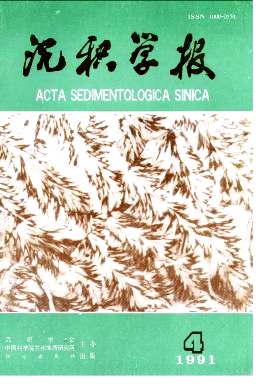Diagenesis of Sandstone and Its Influence on Reservoir Property, Well Lu-1 of Luliang Uplift, Junggar Basin
- Received Date: 1990-08-11
- Publish Date: 1991-12-10
Abstract: The present paper mainly studies the diagenesis and its influence on reservoir property of lithic sandstone which is little studied in China. Reservoir rock of well Lu-1 is terrigenous lithic sandstone including a lot of pyroclastic rock fragments. Porosity and permeability of reservoir reduce swiftly with the increase of burial depth, but there is an abnormal increase of porosity at the depth of 3750-4300m. There are four main pore * types of sandstone: primary intergranular pores, inner grains dissoluted pores and micropores. Diagenesis and Sedimentary facies are the two main factors affecting reservoir property of well Lu- 1, but the influence of the latter is not very obvious. The diagenetic influence on reservoir property of sandstone is signifcant and has its particularity to this kind of low mature lithic sandstone of well Lu-1. Compaction and hydration, especially hydration, are the two most important factors which let to the swiftly reduce of porosity, cementation is another important factor of making porosity and permeability worse. Cements of sandstone are calcite, quartz, authigenic clay, zeolite and a little terrigenous matter. Selective dissolution of calcite cement is the main reason which made the porosity and permeability of partial section better. The influence of calcite replacement on porosity and permeability is not valuable. The formation of seceondary dissolution pore is related to CO2 which formed by evolution of organic matter. CO2 can be formed during the whole maturation process especially in stage "A". Generally, the developing belt of secondary pore is in the early period of "A",however, calcite cement in this period hasn't any trace of dissolution in well Lu-1, on the contrary, a lot of elastics are replaced by calcite. Selective dissolution of calcite hasn't take place until late period of "A" and early period of "B". The reason is that; during early period of "A", under alkalline diagenetic environment formed by hydration, the action of CO2 is favourable to the precipitation of calcite, and made replacement developed, but in late period of "A" and early period of "B". hydration nearly disappeared and the neutralization of CO2 changed pores into weak acidity (there is a little CO2 in this period), selective dissolution of calcite cement can be taken place then the belt of secondary pore was formed.
| Citation: | He Haiqing, Jin Huijuan. Diagenesis of Sandstone and Its Influence on Reservoir Property, Well Lu-1 of Luliang Uplift, Junggar Basin[J]. Acta Sedimentologica Sinica, 1991, 9(4): 69-77. |






 DownLoad:
DownLoad: